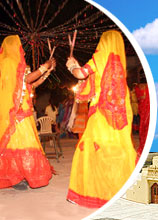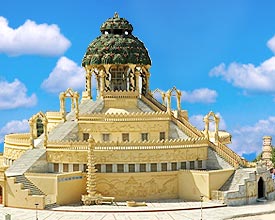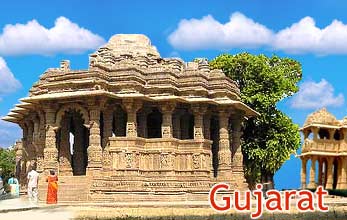 Patan
is one of the important fortified towns of Gujarat, situated on the
banks of the River Saraswati. It was founded in 746 AD by the Chavda
king, Vanraj Chavda. The city also served as the capital of Gujarat for
about 600 years, from 746 AD to 1411 AD. Many rulers of Rajput clans of
Chavdas, Solanki and Vaghalas ruled the state of Gujarat from Patan.
During the Solanki period, the glory of Patan reached its peak. It was
known as the Golden age of Gujarat. The rulers of Patan were great
patrons of art and architecture.
Patan
is one of the important fortified towns of Gujarat, situated on the
banks of the River Saraswati. It was founded in 746 AD by the Chavda
king, Vanraj Chavda. The city also served as the capital of Gujarat for
about 600 years, from 746 AD to 1411 AD. Many rulers of Rajput clans of
Chavdas, Solanki and Vaghalas ruled the state of Gujarat from Patan.
During the Solanki period, the glory of Patan reached its peak. It was
known as the Golden age of Gujarat. The rulers of Patan were great
patrons of art and architecture.As a result, the city became a center of learning, during their rule. A number of civic as well as religious buildings were constructed in the city, including many Hindu, Muslim and Jain religious places. However, the Jain temples outnumber the others. They are about 122 in number and more than 100 years old. Besides, there are 9 Hindu temples and 12 Mosques in the city. These monuments are a major attraction from travel and tourism point of view. The foreign tourists throng the city, to view the amazing monuments adorned with intricate carvings and sculptures.
Apart from this, the ruins of the ancient city are still visible, making it a good archaeological site. The old city contained market places, temples, gardens, educational centers and city squares. Today, Patan has been transformed from what it was earlier. It serves a good market place for the farmers of the region. The city is very famous for its Patola sarees the world over. Patola sarees are the specialty of the place and examples of the traditional art. Each saree is truly a masterpiece and takes approximately 4 to 6 months to be completed.








